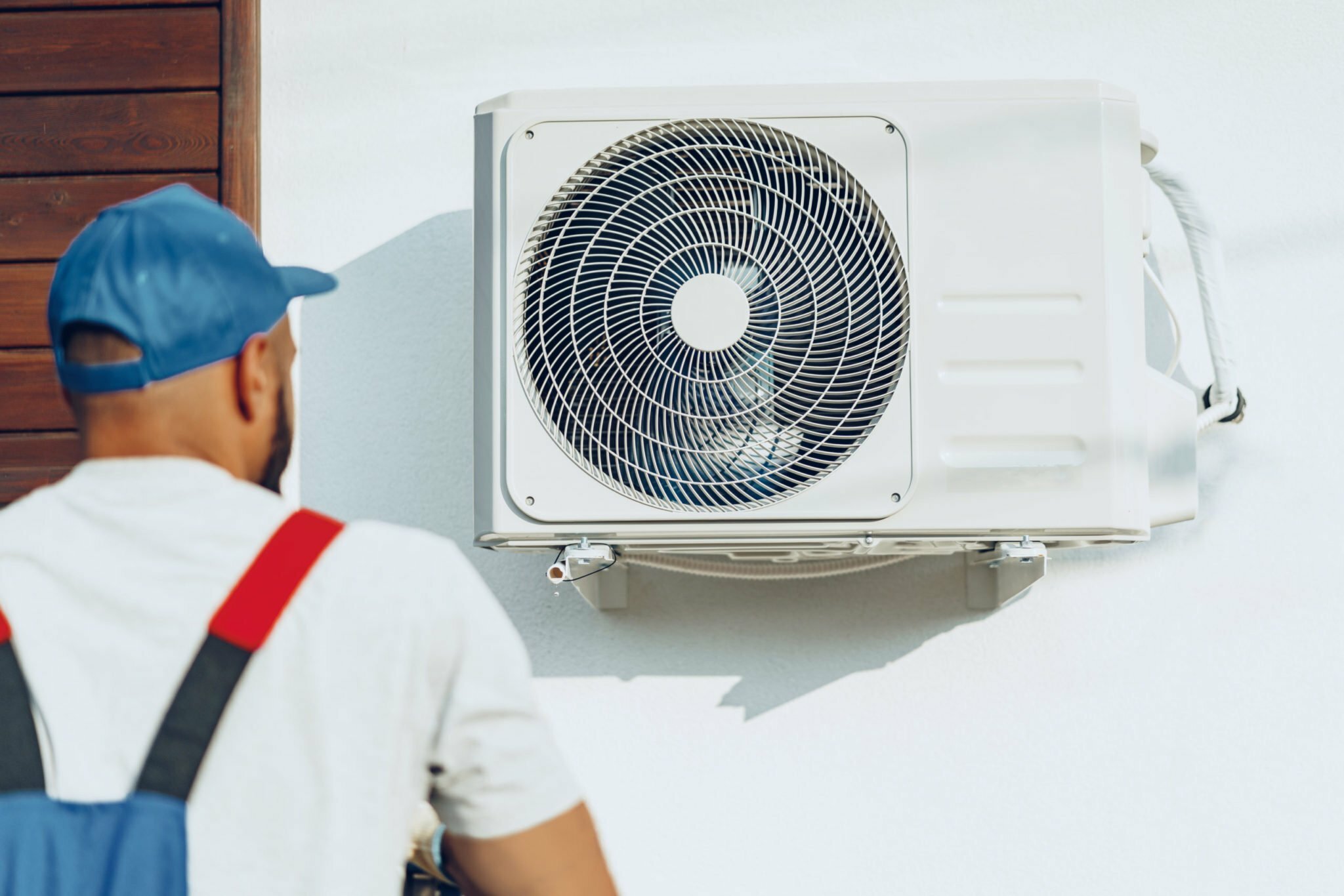How often should ac cycle – Delving into the realm of AC cycling, this article explores the optimal frequency for AC units to operate at. Understanding how often an AC should cycle is crucial for maximizing its performance, efficiency, and lifespan. Join us as we uncover the factors that influence cycling frequency and delve into case studies to illustrate the impact of different cycling rates.
Cycling frequency plays a pivotal role in the overall health and performance of an AC unit. Too frequent cycling can strain the compressor, while infrequent cycling can lead to inefficient cooling and increased energy consumption. Finding the optimal balance is key to ensuring your AC operates at its best.
AC Cycling Frequency

Air conditioners (ACs) undergo cycles of operation, involving periods of cooling followed by periods of rest. The frequency of these cycles, known as AC cycling frequency, is a crucial factor that influences the efficiency and lifespan of the AC unit.
The typical AC cycling frequency range falls between 3 and 10 cycles per hour. This range ensures optimal cooling performance while minimizing wear and tear on the AC components. However, the optimal cycling frequency can vary depending on several factors, such as:
Ambient Temperature
Higher ambient temperatures lead to increased cooling demand, resulting in more frequent AC cycles. In hot and humid climates, ACs may cycle up to 10 times per hour to maintain the desired indoor temperature.
AC Unit Size
The size of the AC unit relative to the space it is cooling affects the cycling frequency. An oversized AC unit will cool the space too quickly, leading to short cycles and reduced efficiency. Conversely, an undersized unit will struggle to maintain the desired temperature, resulting in longer cycles and increased energy consumption.
AC Maintenance
Regular AC maintenance, including cleaning and refrigerant checks, helps ensure efficient operation and reduces the frequency of unnecessary cycles. A well-maintained AC unit will cycle less frequently, saving energy and extending its lifespan.
Effects of Cycling Frequency
Cycling frequency, or the rate at which an AC unit turns on and off, can significantly impact its performance, efficiency, and lifespan. Understanding the effects of cycling frequency is crucial for optimizing AC operation and maintaining a comfortable indoor environment.
Impact of High Cycling Frequencies
High cycling frequencies, where the AC unit turns on and off frequently, can lead to several issues:
Reduced Performance
Frequent cycling prevents the AC unit from reaching its full cooling capacity, resulting in inadequate cooling and discomfort.
Increased Energy Consumption
Each start-up consumes a surge of energy, leading to higher energy bills.
If you’re wondering how long should a furnace run per cycle , the answer depends on a few factors, including the size of your home, the outside temperature, and the type of furnace you have. Generally speaking, a furnace should run for about 10-15 minutes per hour.
However, if it’s very cold outside, the furnace may need to run for longer periods of time.
Premature Compressor Failure
Frequent cycling puts excessive strain on the compressor, the heart of the AC unit, shortening its lifespan.
Consequences of Low Cycling Frequencies
On the other hand, low cycling frequencies, where the AC unit runs for extended periods without turning off, can also have consequences:
Reduced Efficiency
When the AC unit runs continuously, it may cool the space excessively, leading to energy wastage.
Increased Humidity
Continuous operation can result in over-cooling and reduced humidity levels, creating an uncomfortable and dry environment.
Shorter Lifespan
Constant operation can put stress on the AC components, potentially reducing their lifespan.
AC Lifespan, How often should ac cycle
Cycling frequency plays a crucial role in determining the lifespan of an AC unit. High cycling frequencies can significantly reduce the compressor’s lifespan, while low cycling frequencies can strain other components. Finding the optimal cycling frequency balance is essential for maximizing the AC unit’s lifespan.
Optimizing Cycling Frequency
Determining the optimal cycling frequency for specific AC applications is crucial for maximizing performance and efficiency. This involves understanding the impact of cycling frequency on various AC parameters and adjusting it accordingly.
Methods for Adjusting Cycling Frequency
- Compressor Speed Control:Variable-speed compressors allow for precise adjustment of cycling frequency by altering the compressor’s operating speed.
- Capacitor Selection:The size and type of capacitor used in the AC unit can influence the cycling frequency. Selecting the appropriate capacitor ensures optimal starting and running characteristics.
- Refrigerant Charge:The amount of refrigerant in the system can affect the cycling frequency. Proper refrigerant charge is essential for efficient operation and optimal cycling behavior.
Monitoring and Maintaining Optimal Cycling Frequency
Regular monitoring of cycling frequency is essential to ensure ongoing performance. Techniques for monitoring include:
- Pressure Gauges:Pressure gauges provide an indication of the refrigerant pressure in the system, which can reveal excessive cycling.
- Temperature Sensors:Temperature sensors measure the temperature of the air entering and leaving the AC unit, which can indicate deviations from optimal cycling frequency.
- Data Loggers:Data loggers can continuously record cycling frequency over time, providing valuable insights into system performance.
Maintaining optimal cycling frequency involves addressing any underlying issues that may be causing excessive cycling, such as refrigerant leaks, electrical faults, or dirty filters. Regular maintenance and timely repairs help ensure the AC unit operates efficiently and within the desired cycling frequency range.
Case Studies and Examples
Practical examples and case studies provide valuable insights into the effects of different cycling frequencies on AC performance and the benefits of optimizing cycling frequency in various industries.
Case Study 1
A study conducted in a commercial building compared the performance of an AC system with different cycling frequencies. The results showed that a cycling frequency of 6 cycles per hour (cph) resulted in a 15% reduction in energy consumption compared to a cycling frequency of 2 cph.
This reduction in energy consumption was attributed to the reduced compressor runtime and the improved dehumidification of the space.
Case Study 2
A manufacturing facility implemented a cycling frequency optimization program that involved adjusting the cycling frequency of the AC system based on the occupancy and load profile of the facility. The program resulted in a 10% reduction in energy consumption and a 5% increase in productivity.
If you’re looking to get rid of an old motorcycle, there are a few different options available to you. How to dispose of a motorcycle can be a tricky process, but with a little research, you can find the best solution for your needs.
One option is to sell the motorcycle to a private buyer. This can be a good option if the motorcycle is in good condition and you can get a fair price for it.
The reduction in energy consumption was achieved by reducing the compressor runtime during unoccupied periods, while the increase in productivity was attributed to the improved indoor air quality and thermal comfort.
Table: Benefits and Drawbacks of Different Cycling Frequencies
The following table summarizes the benefits and drawbacks of different cycling frequencies:
| Cycling Frequency | Benefits | Drawbacks |
|---|---|---|
| Low (2-4 cph) | – Reduced energy consumption
|
– Potential for short cycling
|
| Medium (6-8 cph) | – Balance between energy consumption and compressor life
|
– May not be suitable for all applications |
| High (10+ cph) | – Reduced compressor runtime
|
– Increased energy consumption
|
End of Discussion: How Often Should Ac Cycle

In conclusion, optimizing AC cycling frequency is essential for maintaining peak performance and efficiency. By considering factors such as application, environment, and desired cooling levels, you can determine the ideal cycling rate for your AC unit.
Regular monitoring and maintenance will help ensure optimal cycling frequency, prolonging the lifespan of your AC and keeping your indoor environment comfortable.
Essential Questionnaire
How can I determine the optimal cycling frequency for my AC?
The optimal cycling frequency varies depending on the specific AC unit and application. Factors to consider include the size of the space being cooled, the ambient temperature, and the desired cooling level. Consulting with an HVAC professional is recommended to determine the ideal cycling frequency for your system.
What are the consequences of high cycling frequencies on AC performance?
High cycling frequencies can put excessive strain on the AC compressor, leading to premature wear and tear. It can also result in reduced cooling efficiency and increased energy consumption.
How does cycling frequency affect AC lifespan?
Optimal cycling frequency helps prolong the lifespan of an AC unit by reducing stress on the compressor and other components. Conversely, excessive or infrequent cycling can shorten the lifespan of the AC.
